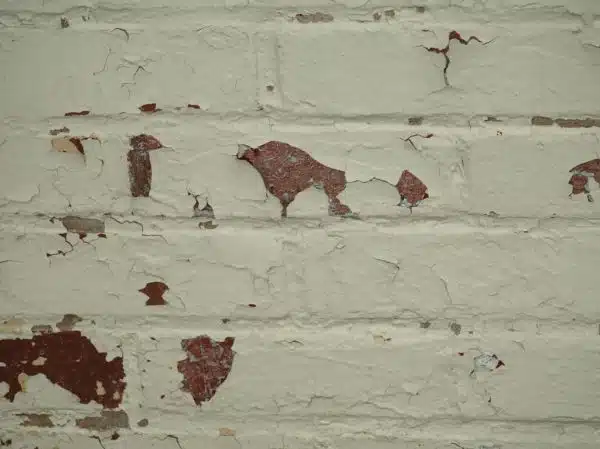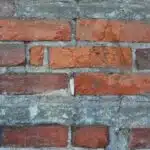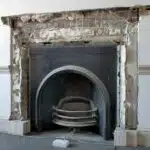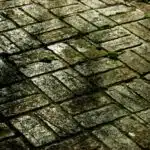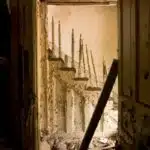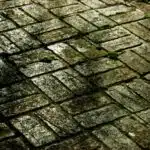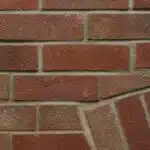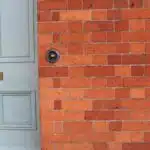As a professional house painter, one of the most common requests I receive is for whitewashing brick. Whether it’s an interior fireplace or an exterior home facade, whitewashing can add a fresh and modern look to any space. It’s a great option for those looking to update their home without undergoing a major renovation.
Whitewashing involves applying a thin coat of paint or watered-down paint mixture to brick in order to create a semi-transparent finish that allows some of the natural texture and color of the brick to show through. This technique has been used for centuries and can provide both aesthetic appeal and practical benefits such as protection against moisture and dirt buildup. In this article, we will discuss how to properly prepare your surfaces for whitewashing, what materials you’ll need, and step-by-step instructions for achieving a beautiful whitewashed finish on both interior and exterior brick surfaces.
Understanding The Benefits Of Whitewashing Brick
As a professional house painter, I have seen firsthand the transformative power of whitewashing brick. It is like giving an old building a fresh coat of paint – it can breathe new life into a space and completely change its aesthetic. Not only does it look great, but there are also several benefits to whitewashing brick that make it an attractive option for both interior and exterior surfaces.
One of the primary benefits of whitewashing brick is cost. Compared to other renovation options, such as tearing down and rebuilding, whitewashing is relatively affordable. It requires minimal materials and labor, making it a cost-effective way to update your home or business’s appearance. Furthermore, by choosing a color that complements your existing decor, you can achieve a cohesive look without breaking the bank.
Another advantage of whitewashing brick is aesthetics. When done correctly, it can give your home or business a modern yet rustic feel that is both inviting and sophisticated. The process involves painting over the bricks with diluted white paint to create a washed-out effect that allows some of the natural color and texture of the bricks to show through. This creates an interesting contrast between the old-world charm of the bricks and the sleekness of the white paint.
However, before committing to whitewashing your brick surface, it’s important to consider some potential drawbacks. For example, durability may be impacted as paint does not adhere as strongly to porous materials like brick compared to non-porous materials like wood or metal. Additionally, maintenance could become more challenging if dirt or grime accumulates on the surface over time due to its rough texture. Nonetheless, these cons should not discourage you from considering this option since there are ways around them that we’ll explore later in this guide.
To ensure success when whitewashing brick surfaces, selecting high-quality materials such as lime wash or masonry paint will help enhance durability while minimizing maintenance issues in years to come.
Choosing The Right Type Of Brick For Whitewashing
Now that we understand the benefits of whitewashing brick, let’s move on to choosing the right type of brick for this process. Brick selection is crucial when it comes to achieving a desirable outcome. Not all types of bricks are ideal for whitewashing, so it’s important to consider certain factors before making a decision.
Firstly, it’s essential to choose a brick that is porous enough to absorb the whitewash solution. This means that smooth and glazed bricks may not be the best option as they don’t allow for proper penetration. Secondly, select a brick with a color tone that complements your desired look. Generally, lighter shades of brick work best for this technique as they provide a neutral base for the white paint to adhere to.
Once you’ve selected your preferred type of brick, it’s time to consider color options. While white is the most classic choice for whitewashing, there are other colors available that can add depth and character to your space. Soft gray or beige hues can create an elegant and sophisticated feel while still maintaining a subtle whitewash effect.
Incorporating these tips into your selection process will ensure that you achieve a beautiful and long-lasting finished product. In the next section, we will discuss how to prepare your interior brick surface for whitewashing without damaging it in the process.
Preparing Your Interior Brick Surface For Whitewashing
Before beginning the whitewashing process, it’s essential to prepare your interior brick surface correctly. This preparation stage involves cleaning the surface thoroughly, choosing the right paint, and applying sealant. To ensure a smooth and long-lasting finish, you should take each of these steps seriously.
Firstly, clean the brick thoroughly with a wire brush and vacuum. You may also need to use a solution of soap and water or a chemical cleaner to remove any stubborn stains. Once you have cleaned the surface, allow it to dry completely before moving on to the next step.
Choosing paint is another crucial aspect of preparing your interior brick surface for whitewashing. It’s best to pick an oil-based paint that will adhere well to the porous surface of bricks. You may want to consider using a primer before applying paint as it helps the paint stick better and prevent peeling in the future.
Lastly, apply a layer of sealant over the painted surface. Sealant application plays an important role in protecting your whitewashed brick from moisture damage and dust accumulation. It also helps preserve its color and texture for years to come.
Moving forward with these preparatory steps ensures successful results when whitewashing your interior brick surfaces.Choosing paint and sealant applications are critical elements that determine how long your project will last without having to repaint or reapply sealants. The same steps can be applied when preparing exterior brick surfaces for whitewashing, which we’ll look at in more detail in our next section.
Preparing Your Exterior Brick Surface For Whitewashing
After preparing your interior brick surface for whitewashing, it’s time to move on to the exterior. Unlike the interior, the exterior is exposed to harsh environmental elements that can affect the final result of your project. But fear not, with proper preparation and the best techniques, you can achieve a beautiful whitewashed brick exterior.
Firstly, it’s important to have the right tools for exterior brick preparation. This includes a pressure washer or garden hose, a stiff-bristled brush, and safety gear such as gloves and eye protection. Before beginning any work, consider weather conditions as well. It’s best to avoid extreme heat or cold as this can affect drying times and adhesion.
Next up is surface cleaning. This step is crucial in achieving an even finish without any blemishes or stains interfering. Start by thoroughly cleaning the entire surface with water and a mild detergent solution using a pressure washer or garden hose with high-pressure nozzle attachment. Use a stiff-bristled brush for harder-to-reach areas such as corners or around windows and doors.
Now that your exterior brick surface has been properly prepared, you’re ready to begin whitewashing! Stay tuned for our next section on how to apply whitewash to your exterior brick surface using professional techniques for a flawless finish.
Cleaning Your Brick Surface
As a professional house painter, I understand the importance of maintaining a clean brick surface. A dirty or stained brick exterior can significantly reduce the curb appeal of any property. Therefore, it’s essential to know how to clean your brick surface effectively.
Removing stains is an integral part of cleaning your brick exterior or interior. The most common types of stains are from mold, mildew, and dirt buildup. To remove these stains, you can use eco-friendly cleaning solutions that are effective in lifting stubborn stains without harming the environment. Avoid harsh chemicals as they may damage the brick surface over time.
Preventing future dirt buildup is also crucial for maintaining a clean brick surface. Regularly cleaning your brick surfaces with gentle cleansers can be beneficial in preventing dirt buildup from becoming too severe. Additionally, using a power washer on low pressure can help blast away any excess dirt that may linger on the surface.
In conclusion to cleaning your brick surface, using eco-friendly cleaning products and regularly maintaining its cleanliness can make all the difference in keeping your property looking its best. However, if there is any damage to the brick surface, repairing it promptly should be the next step. Let’s move on to discussing repairing any damage to the brick without delay.
Repairing Any Damage To The Brick
After cleaning your brick surface, it’s important to assess if there is any damage that needs repairing. This includes cracks, chips, or missing pieces of brick. Some homeowners may attempt to repair this damage themselves, but it’s recommended to hire a professional for larger repairs to ensure the structural integrity of the building is not compromised.
There are several techniques used in brick restoration for repairing damage. One common method is tuckpointing, which involves removing damaged mortar and replacing it with new mortar. Another option is brick replacement, where damaged bricks are removed and replaced with new ones. Both methods require skill and expertise to execute properly.
It’s important to note that repairing any damage to your brick before whitewashing is crucial for both interior and exterior applications. Neglecting repairs can result in an uneven finish and further exacerbate any pre-existing damage. By addressing repairs prior to whitewashing, you can ensure a smooth and uniform appearance while also preserving the longevity of your brick surface.
Moving forward into protecting your surroundings during the whitewashing process, it’s essential to take necessary precautions such as covering nearby plants and furniture with drop cloths or plastic sheeting. This will prevent any accidental overspray or drips from damaging your property or belongings. Additionally, wearing protective clothing such as gloves and goggles can protect you from potential harm caused by the chemicals present in some whitewashing products. Taking these steps will not only ensure a successful outcome but also prioritize the safety of yourself and your surroundings.
Protecting Your Surroundings
- Preparation is key to successful whitewashing – surfaces must be thoroughly covered before applying the coat of paint.
- Dust must be removed from all surfaces prior to painting, in order to ensure a clean and even finish.
- Any cracks in the brickwork should be sealed to prevent the whitewash from seeping through, as this could cause discoloration and a patchy finish.
- For exterior whitewashing, a primer should be applied before the first layer of paint to prevent water absorption.
- For interior whitewashing, a sealer should be used to protect the brick from dirt and dust.
- Once the necessary preparations are completed, the whitewash can be evenly applied to the surface for a beautiful finish.
Covering Surfaces
The art of covering surfaces effectively is an essential skill for any professional house painter. It involves using DIY techniques to achieve creative ideas that will provide adequate protection for your surroundings. When it comes to whitewashing brick, both the interior and exterior surfaces require proper coverage to enhance their durability.
For interior brick walls, you can use a mixture of white paint and water to create a whitewash solution. The ratio of paint to water can vary depending on the desired opacity level. Apply the solution with a brush or roller, working in small sections and allowing each coat to dry completely before applying another layer. For an exterior surface, the process is similar but requires more attention to detail due to weather conditions. A high-quality primer should be used first before applying the whitewash solution.
In conclusion, covering surfaces is a crucial aspect of protecting your surroundings from damage and wear over time. With these DIY techniques and creative ideas, you can easily achieve a beautiful whitewashed look for both interior and exterior brick surfaces. Remember to always take necessary precautions when painting, such as wearing protective gear and properly ventilating the area.
Removing Dust
As a professional house painter, protecting your surroundings goes beyond just painting surfaces. Before applying any paint or primer, it is crucial to ensure that the surface is clean and free from dust. Dust particles can affect the quality of your paint job and prevent proper adhesion of the paint to the surface.
Cleaning techniques vary depending on the type of surface and the amount of dust present. For surfaces such as walls and ceilings, a simple dry cloth or microfiber duster can be used to remove loose dust particles. For more stubborn dust or hard-to-reach areas, a vacuum with a soft brush attachment can be used. It is important to avoid using water or cleaning solutions on surfaces prior to painting, as this can create unwanted moisture that affects the paint’s adhesion.
In addition to dust removal tools, it is recommended to wear protective gear such as gloves and a mask when cleaning surfaces. This not only protects you from inhaling harmful dust particles but also prevents skin irritation from cleaning solutions. By taking these necessary precautions and utilizing effective cleaning techniques, you can achieve optimal protection for your surroundings while ensuring a high-quality paint job that will last for years to come.
Sealing Cracks
As a professional house painter, one of the crucial steps in protecting your surroundings is filling cracks and gaps in the surface. These imperfections can allow water to seep through and cause damage to walls, ceilings, or floors. Filling these cracks not only improves the aesthetic appeal of the surface but also helps to prevent water from penetrating it.
To fill cracks and gaps, various waterproofing techniques can be used depending on the type of surface. For small cracks or holes, acrylic caulk or spackling paste can be used. These products are easy to apply and dry quickly. For larger cracks or gaps, epoxy filler or joint compound can be used. These products have a higher resistance to water and provide a more durable seal.
Before applying any filler or compound, it is important to thoroughly clean the surface and remove any loose debris or dust particles. Once filled, the surface should be sanded to create an even finish before painting. By taking these necessary measures to fill cracks and gaps in surfaces prior to painting, you can ensure that your surroundings are well-protected from potential damages caused by water infiltration for years to come.
Gathering Your Materials
To begin whitewashing brick, you will need to gather all necessary materials. This includes a paintbrush or roller, a bucket for mixing your solution, a stirring stick, and of course, the whitewash solution itself. You may also want to consider using painter’s tape to protect any areas that you do not want painted.
The cost of materials for whitewashing brick can vary depending on the size of the area you plan to cover and the quality of materials you choose. On average, expect to spend around $50-$100 for enough materials to cover a medium-sized interior wall or exterior surface. It is important to remember that investing in high-quality materials can result in a longer-lasting and more durable finish.
Taking the time to gather all necessary materials before beginning your project will save you time and frustration in the long run. By having everything readily available, you can focus on achieving the best possible results without any unnecessary interruptions. In the next section, we will discuss how to mix your whitewash solution for optimal coverage and texture.
Mixing Your Whitewash Solution
After gathering all the necessary materials, it’s time to mix your whitewash solution. There are several mixing techniques that you can use depending on the type of whitewash solution you prefer. A common method is to mix equal parts water and paint together until you achieve the desired consistency. However, some painters suggest using lime instead of paint for a more traditional whitewashing technique.
Mixing techniques vary depending on the type of solution you want to achieve. For instance, if you’re looking for a thicker consistency, you may want to add more paint or lime. On the other hand, if you want a more transparent look, add more water to your mixture. It’s important to test the consistency of your mixture before applying it to avoid any mistakes during application.
If you’re looking for alternative solutions, there are many options available in the market today. Some popular alternatives include premixed whitewash solutions that come in various colors and finishes. These solutions can be applied directly without requiring any additional mixing or preparation steps.
As we move forward into applying your whitewash to interior brick, it’s important to remember that proper preparation and application techniques are key factors in achieving optimal results. In the next section, we will discuss how to apply your mixed solution onto interior brick surfaces while ensuring maximum adhesion and durability.
Applying Your Whitewash To Interior Brick
Before starting your whitewashing project, make sure to clean the interior brick thoroughly. Use a wire brush or sandpaper to remove any dirt, grime or loose mortar. Afterward, wipe the surface with a damp cloth and let it dry completely before applying your whitewash.
When it comes to applying techniques, start at the top of the wall and work downward. Use a paintbrush or roller to apply an even coat of whitewash to the brick surface. If necessary, use a second coat once the first one has dried completely. Remember that you can customize your whitewash color by adding more water for a lighter tone or less water for a darker hue.
For color options, you can choose from various shades of white or add tinted pigments to achieve your desired color. You can also experiment with different textures by using different brushes or sponges during application. The key is to have fun and be creative while following proper application techniques for optimal results.
To apply your whitewash to exterior brick, follow similar steps as you would with interior brick but take into account weather conditions such as temperature and humidity. Additionally, consider using sealant or waterproofing products for added protection against rain or snow. With these tips in mind, you’re ready to transform any brick surface into a beautiful and unique feature of your home!
Applying Your Whitewash To Exterior Brick
To achieve a crisp and clean finish when whitewashing exterior brick, it is important to choose the right paint. Look for a high-quality masonry paint that is specifically designed for use on brick surfaces. This type of paint will have the durability and adhesion necessary to withstand weathering and temperature fluctuations.
Tips for a smooth application include preparing the surface properly by pressure washing or scrubbing with a stiff-bristled brush to remove any dirt or debris. Allow the surface to dry completely before beginning the painting process. Use a roller or paint sprayer to apply the whitewash evenly, working in small sections at a time. Be sure to follow the manufacturer’s instructions for drying time between coats.
After completing the painting process, caring for your newly whitewashed brick is essential to maintain its appearance and protect it from damage. Regularly inspect the brick surface for signs of wear or cracking, and address any issues promptly. Clean the surface as needed with mild soap and water, avoiding harsh chemicals that can strip away the protective coating of your paint job. By following these tips, you can enjoy your beautifully whitewashed brick for years to come.
Caring For Your Newly Whitewashed Brick
Maintaining whitewash requires regular cleaning and sealing to ensure the brick is kept in its newly whitewashed condition. Cleaning whitewash can be done with a mild detergent and a soft cloth or brush to prevent damage to the brick or paint. Sealing the brick is also recommended, as this will help keep the whitewash looking fresh and new. Professional house painters can provide advice on the best products and methods to maintain whitewash on both exterior and interior brick surfaces.
Maintaining Whitewash
Maintaining Whitewash is crucial in ensuring the longevity of your bricks’ aesthetic appeal. Whitewash durability can be enhanced by using sealers that prevent moisture from seeping into the bricks, which can cause discoloration over time. It is also essential to clean dirt and debris off your bricks regularly. This will not only maintain their appearance but also prevent mold growth, which can be a health hazard.
Preventing discoloration of your whitewashed brick is an ongoing process that requires regular monitoring. Avoid exposing your bricks to direct sunlight as this can cause them to fade or yellow over time. Using a high-quality paint with UV inhibitors will also help reduce the impact of sun exposure on your bricks. Finally, avoid using harsh cleaning agents when cleaning your whitewashed brick as this can damage the surface and lead to discoloration.
In conclusion, maintaining the durability and color of your whitewashed brick requires consistent care and attention. By following these simple steps, you can ensure that your bricks retain their beautiful white aesthetic for years to come. Remember always to use high-quality products and avoid harsh chemicals when cleaning or maintaining your whitewashed brick.
Cleaning Whitewash
Proper cleaning is an essential aspect of caring for your newly whitewashed brick. Dirt and stains can quickly accumulate on the surface, causing discoloration and damage if not cleaned promptly. As a professional house painter, I recommend taking a proactive approach to keep your whitewashed brick looking its best.
Stain removal is a common challenge when it comes to cleaning whitewashed brick. While some stains may require professional intervention, many can be removed using DIY methods. For example, mix equal parts white vinegar and water to create a natural cleaning solution that effectively removes dirt and grime without damaging the brick’s surface. Alternatively, use baking soda mixed with water or hydrogen peroxide for more stubborn stains.
It is important to note that harsh cleaning agents can damage the surface of your whitewashed brick and lead to discoloration over time. Therefore, it is crucial to use gentle cleaning solutions that are specifically formulated for masonry surfaces. By incorporating regular cleaning into your maintenance routine, you can ensure that your newly whitewashed brick retains its beautiful appearance for years to come while serving others by creating a welcoming environment.
Maintaining Your Whitewashed Brick Over Time
After completing the whitewashing process, it is crucial to maintain your newly whitewashed brick for long-term durability. You must take specific steps to ensure that the paint does not peel or chip away. The first step in maintaining your whitewashed brick is to avoid applying excessive water or cleaning agents on it. Water can seep into the brick crevices and cause discoloration, leading to unsightly stains.
Another way of maintaining your whitewashed brick is by preventing discoloration. This can be done by using a sealant over the painted surface, which acts as a barrier against moisture and other environmental pollutants. A high-quality sealant will protect your newly painted surface from fading or peeling off while ensuring its longevity. Moreover, you can also regularly clean the surface with a dry cloth or soft-bristle brush to remove any dust, dirt, or grime that may accumulate over time.
Lastly, if you encounter any issues with your whitewashed brick’s appearance, there are ways to troubleshoot them effectively. For instance, if you notice peeling paint, it could be due to poor preparation before painting. In such cases, you may need to sand down the affected area and apply a fresh coat of paint after priming it appropriately. Similarly, if you see cracks on the painted surface, this could indicate that the paint was applied too thickly or inadequately prepped beforehand. Hence, it would help if you sanded down these areas before repainting them again.
Troubleshooting Common Whitewashing Issues
As a professional house painter, I have encountered various issues that may arise when whitewashing brick surfaces, both indoors and outdoors. One of the most common problems is flaking, which occurs when the whitewash fails to adhere properly to the brick surface. This can be prevented by ensuring that the surface is clean and free of any dust or debris before applying the whitewash. It is also essential to use a high-quality primer designed specifically for brick surfaces.
Another issue that homeowners may encounter when whitewashing their brick surfaces is streaking. Streaks can be avoided by applying the whitewash in thin coats and allowing each layer to dry completely before applying another coat. It’s also important to avoid over-brushing or rolling as this can cause streaks in the finished product.
Sometimes, despite our best efforts, uneven coverage and drips may occur during the whitewashing process. If you encounter these issues, don’t panic! Uneven coverage can be fixed by lightly sanding down any raised areas and then reapplying additional layers of whitewash until an even coverage is achieved. Drips can be removed by using a damp cloth or sponge to gently wipe away any excess paint before it dries.
To avoid these issues altogether, consider hiring a professional for your whitewashing needs. A professional painter has years of experience and knowledge regarding all aspects of painting including preparation techniques, application methods, and troubleshooting solutions. They will ensure that your brick surfaces are properly prepared and painted with high-quality materials so that you can enjoy a beautiful and long-lasting finish.
Hiring A Professional For Your Whitewashing Needs
Hiring a professional for your whitewashing needs can be a wise decision, especially if you lack the time, skill or confidence to complete the project yourself. Professional painters have the necessary tools and expertise to produce high-quality results that can last for years. They also have access to professional-grade materials that are not readily available to DIY enthusiasts.
One of the benefits of hiring a professional is that they can help you achieve your desired look without compromising the structural integrity of your bricks. A professional painter will assess the condition of your brickwork before starting any work and make any necessary repairs. They will then apply a primer and paint in thin layers, ensuring that each layer dries completely before applying the next one.
While DIY options may seem cheaper at first glance, they can end up costing you more in the long run if you do not have experience with this type of project. A poorly executed whitewashing job could lead to peeling, chipping or cracking paint, which will require costly repairs or repainting in the future. Hiring a professional ensures that the job is done right from start to finish, giving you peace of mind and saving you money on repairs down the line.
In summary, hiring a professional for your whitewashing needs comes with many benefits, including quality workmanship and access to professional materials. While DIY options may seem appealing initially, they carry risks such as poor execution and costly repairs down the line. Consider hiring a professional painter for your next whitewashing project to ensure stunning results that stand the test of time.
Conclusion
Whitewashing brick can be a wonderful way to add character and charm to any interior or exterior space. Understanding the benefits of whitewashing, choosing the right type of brick, and properly preparing and cleaning the surface are all crucial steps to ensure a successful project. With proper care and maintenance, your newly whitewashed brick can last for years to come.
As professional house painters, we understand the importance of attention to detail in every project. Whitewashing brick is no exception. By following these steps and troubleshooting common issues, you can achieve a beautifully refreshed look for your home or business. Don’t hesitate to hire a professional if you’re not confident in your own abilities – we’re always here to help! So go ahead, give your space a fresh new look with whitewashed brick – it’s sure to make a lasting impression on all who enter.
Image Credits
- “Whitewashed Brick” by ArtByChrysti (featured)

